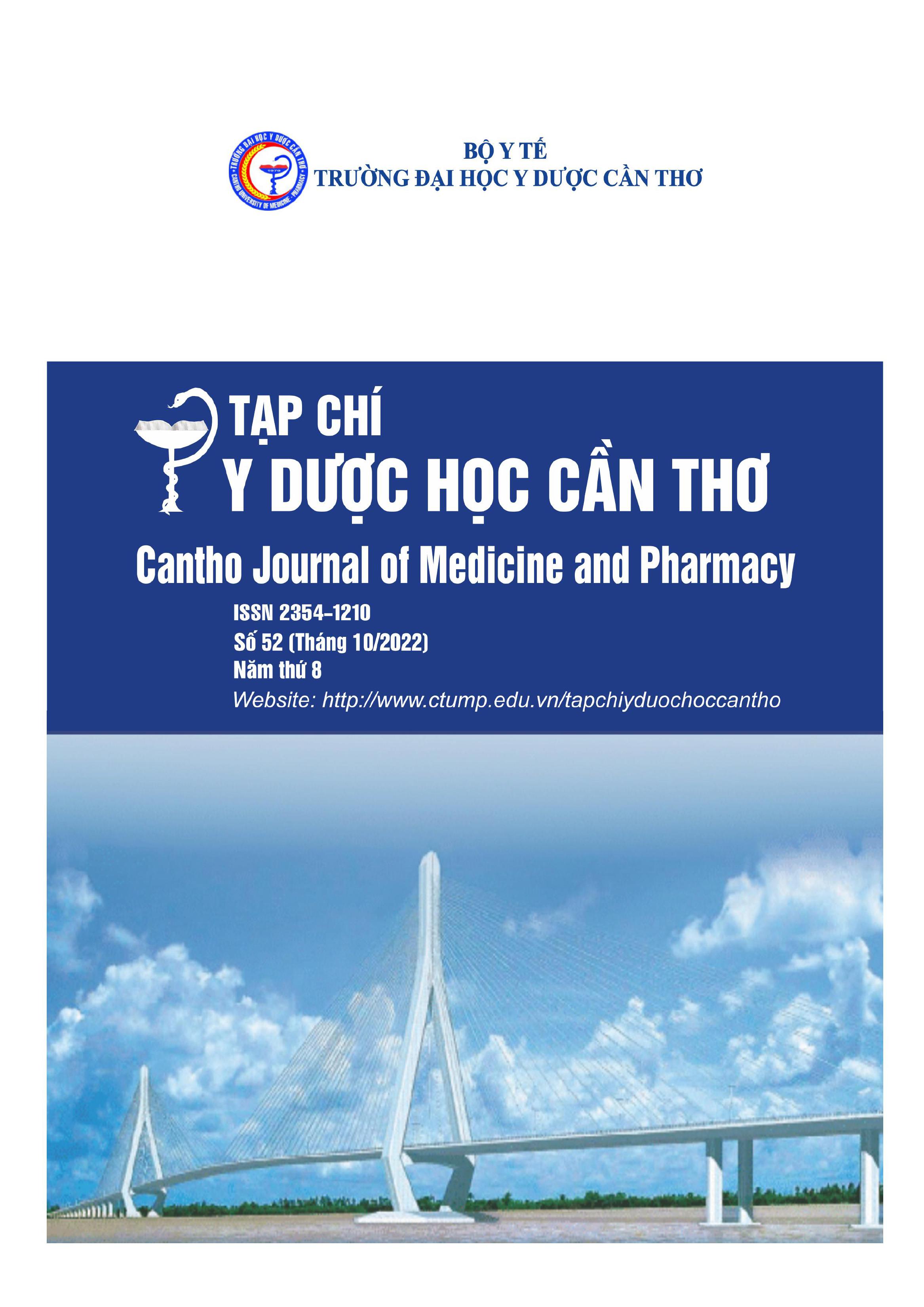COMPUTED TOMOGRAPHY CHARACTERISTICS INTRAVENOUS CONTRAST-ENHANCED OF RECTAL CANCER
Main Article Content
Abstract
Background: Rectal cancer is one of the most common cancers in our country as well as many countries all around the wold. Early diagnosis and accurate staging are necessary to select the most appropriate treatment. Objectives: To describe the computed tomography (CT) characteristics of the patients with rectal cancer. Materials and methods: This is a prospective cross sectional descriptive study of the patients in Can Tho Central General Hospital from May 2020 to May 2022 with histologically confirmed rectal cancer, using intravenous contrast-enhanced computed tomography preoperatively. Results: Totally 52 cases were recruited, among whom, 35 of them were males and 17 were females. The patients’ ages ranged between 36 to 86 years. The accuracy of computed tomography for detecting the T stage of rectal cancer was 82.7%. The sensitivity and specificity for evaluating the invasion of rectal tumor were T1/T2 (69.2%-97.4%), T3 (80%-84.4%), T4 (94%-90.9%). The sensitivity and specificity to detect lymph node metastases were 67.7% and 81%. Conclusion: Computed tomography is an important modality for improving the accuracy of TNM staging and for planning the appropriate rectal cancer treatment.
Article Details
Keywords
Rectal cancer, colorectal cancer, computed tomography, TNM staging
References
2. Akasu T, Sugihara K, Moriya Y, Fujita S (1997), “Limitations and Pitfalls of Transrectal Ultrasonography for Staging of Rectal Cancer”, Dis Colon Rectum, 40(10), S10-15.
3. Dar R.A., Chowdri N.A., Parray F.Q., et al. (2014), “Pre-operative staging of rectal cancer using multi-detector row computed tomography with multiplanar reformations: Single center experience”, Indian J Cancer, 51(2), pp.170-175.
4. Hyuna Sung, Ferlay J, Rebecca L. Siegel (2020), “Global cancer statistics 2020: GLOBOCAN estimates of incidence and mortality worldwide for 36 cancers in 185 countries”, CA Cancer J Clin, 71(3), pp.209-249.
5. Kocaman O., Baysal B., Senturk H., et al. (2014), “Staging of rectal carcinoma: MDCT, MRI or EUS. Single center experience”, Turk J Gastroenterol, 25(6), pp.669-73.
6. Kulinna-Cosentini C., Eibel R., Matzek W., et al. (2004), “Staging of Rectal Cancer: Diagnostic Potential of Multiplanar Reconstructions with MDCT”, AJR. American journal of roentgenology, 183, pp.421-427.
7. Mashhour A., Marzouk A, Gamal A, et al. (2015), “Comparative Study Between the Role of Trans rectal Ultrasound and Magnetic Resonance Imaging in Preoperative Staging of Rectal Carcinoma”, Archive of medicine, 7(5), pp.8.
8. Nasseri Y, Langenfeld SJ (2017), “Imaging for Colorectal Cancer”, Surg Clin North Am, 97(3), pp.503-513.
9. Nougaret S, Jhaveri K, Kassam Z, Lall C, et al. (2019), “Rectal cancer MR staging: pearls and pitfalls at baseline examination”, Abdom Radiol (NY), 44(11), pp.3536-3548.
10. Sivrioglu AK, Aribal S, Onder H, Onol SD (2017), “Utility of MR imaging in the evaluation of colon cancer”, Jpn J Radiol, 35(7), pp.404-405.
11. World Health Organization (2020), “Globocan-Vietnam”, The International Agency for Research on Cancer.
12. Xiao-Cong Zhou, Que-Lu Chen, et al. (2019), “The clinical application value of multi-slice spiral CT enhanced scans combined with multiplanar reformations images in preoperative T staging of rectal cancer”, Medicine, 98(28), e16374.


